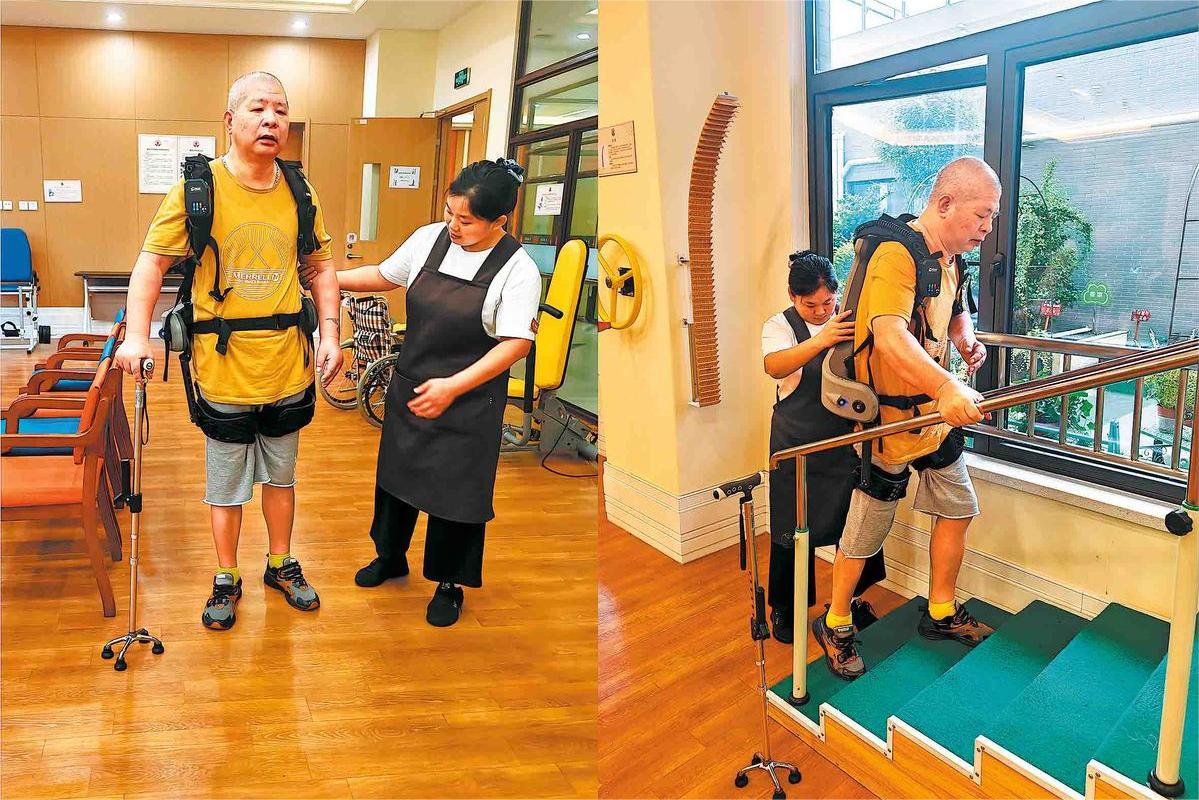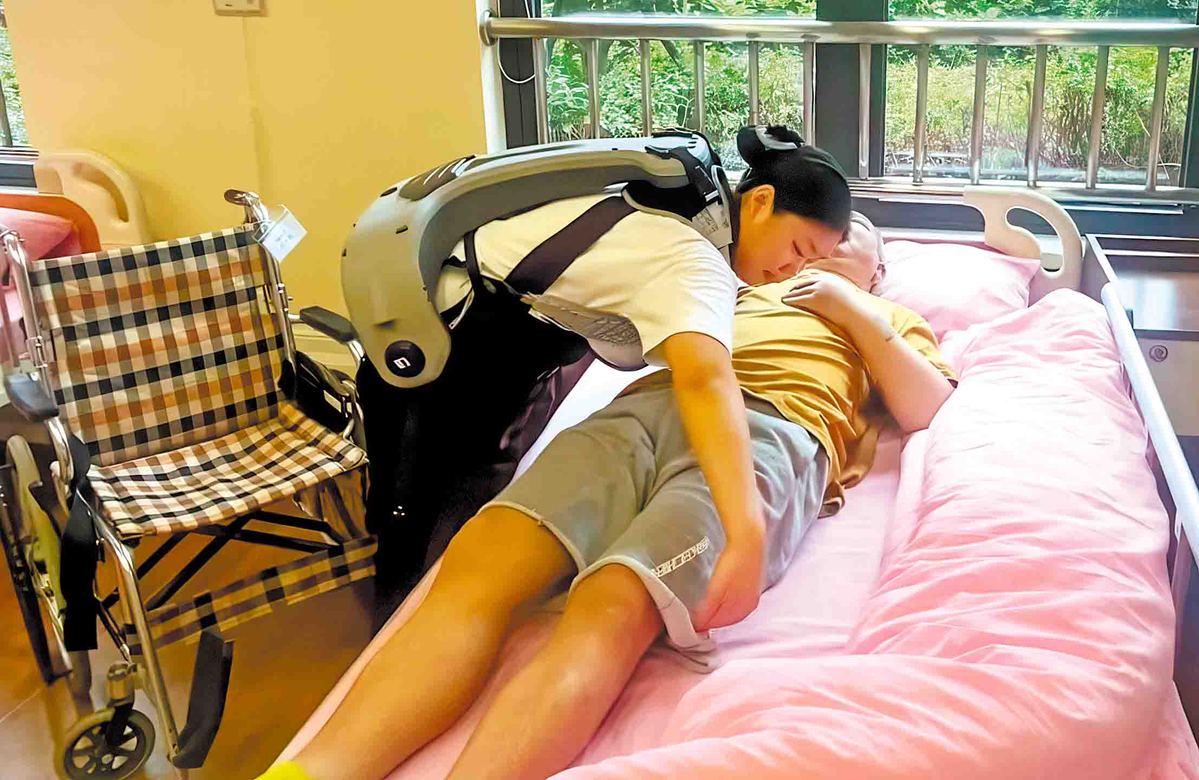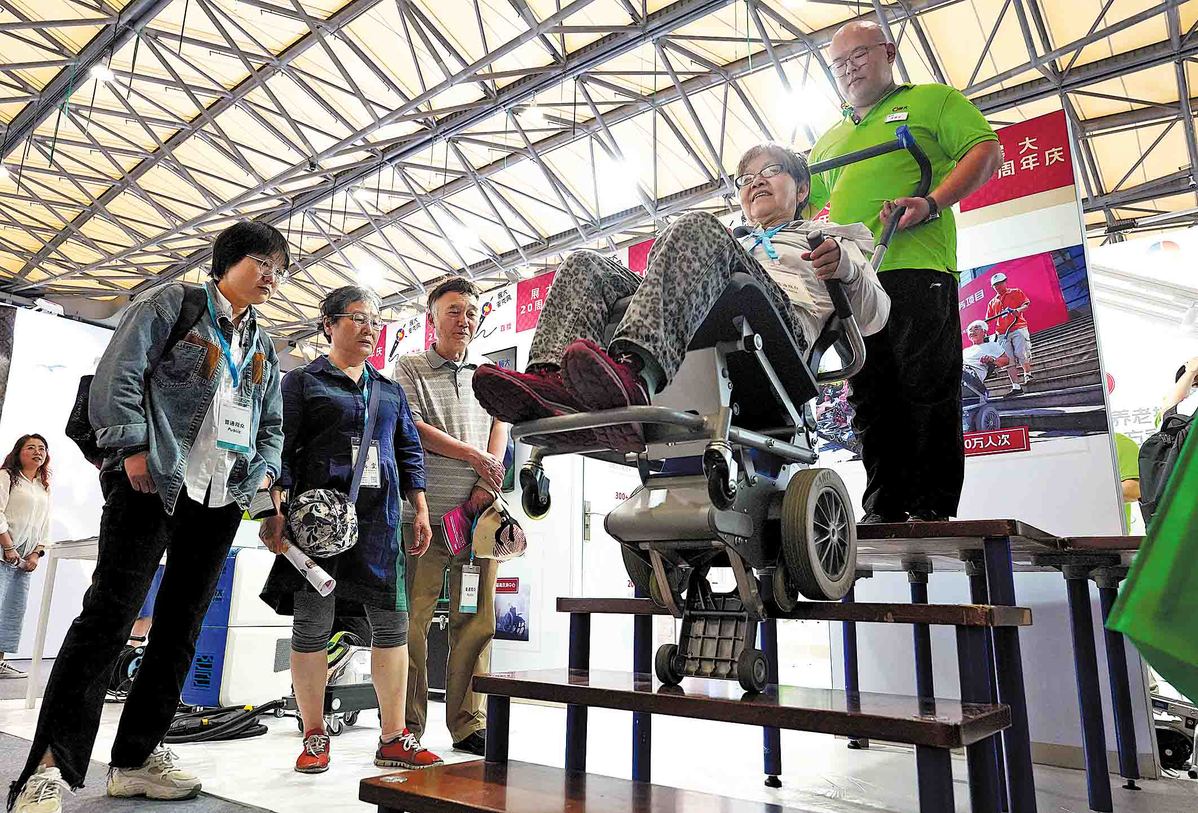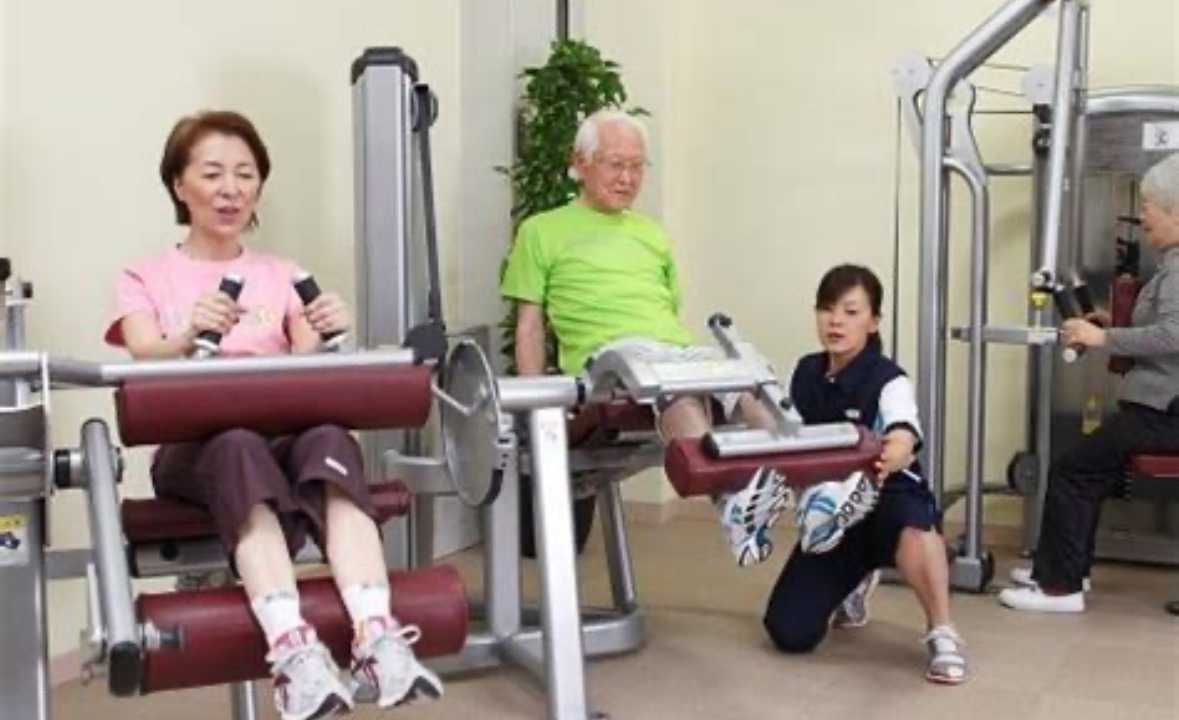
In the not too distant future, humanoid robots will not only be able to perform caregiver tasks for the elderly, such as pushing them in a wheelchair, but also react to them with a range of sympathetic "emotions", according to a leading developer.
Liu Lizheng, head of humanoid robot projects at Shanghai's Fudan University, said he believes that from a technical point of view these functions will be achieved in three to five years.
At the International Exhibition of Senior Care, Rehabilitation Medicine and Healthcare Shanghai 2025 held in the city from June 11 to 13, over 500 domestic and foreign enterprises showcased their latest elderly care products, including exoskeleton robots and intelligent self-driving wheelchairs.

A man wears an exoskeleton robot developed by ULS Robotics to climb the stairs at a nursing home in Shanghai in June 2024. [Photo/CHINA DAILY]

A nurse wearing a ULS exoskeleton device to lift a man from a bed to a wheelchair in June 2024. [Photo/CHINA DAILY]
The exoskeleton weighs 5 kilograms and takes around 30 seconds to put on or remove. It has already had practical application in some nursing homes.

A woman tries a stair climber during the International Exhibition of Senior Care, Rehabilitation Medicine and Healthcare Shanghai 2025 on June 11. [Photo by GAO ERQIANG/CHINA DAILY]
Source: International Services Shanghai (https://english.shanghai.gov.cn/)
International Services Shanghai is an upgraded, multilingual portal for the Shanghai municipal government. It offers detailed policies, news updates, and useful tips for expats in Shanghai who are seeking information on business, employment, travel, education, or shopping.
Answered: June 25


Emerging technologies enhance elderly care through AI-driven health monitoring, IoT-enabled remote systems, and assistive robots for daily tasks. Wearables track vital signs, alerting caregivers to anomalies. Telehealth platforms enable remote consultations, improving healthcare access.
Social robots combat loneliness. Smart home devices enhance safety via fall detection and emergency alerts. Data analytics predict health risks, enabling proactive care.
These innovations promote independence, safety, and quality of life for seniors.
Answered: June 20


Emerging technology can help elderly become more comfortable.
Answered: June 20


Emerging technologies are not just tools but extensions of care, enabling seniors to age with independence while easing the burden on caregivers. The key lies in balancing innovation with empathy—ensuring tech supplements human connection rather than replacing it.
As countries face aging populations (eg, Japan's 30% senior demographic by 2030), these solutions will become essential for sustainable elderly care systems.

Answered: June 20


smart robots can save this problems
Answered: June 21


To make our technology more easily to understand is very important. We can use intelligent equipment, sensor or cloud computing and so on. Maybe can make old person's lives more convenient.
Answered: June 19


To make our technology more easily to understand is very important. We can use intelligent equipment, sensor or cloud computing and so on. Maybe can make old person's lives more convenient.
Answered: June 19








